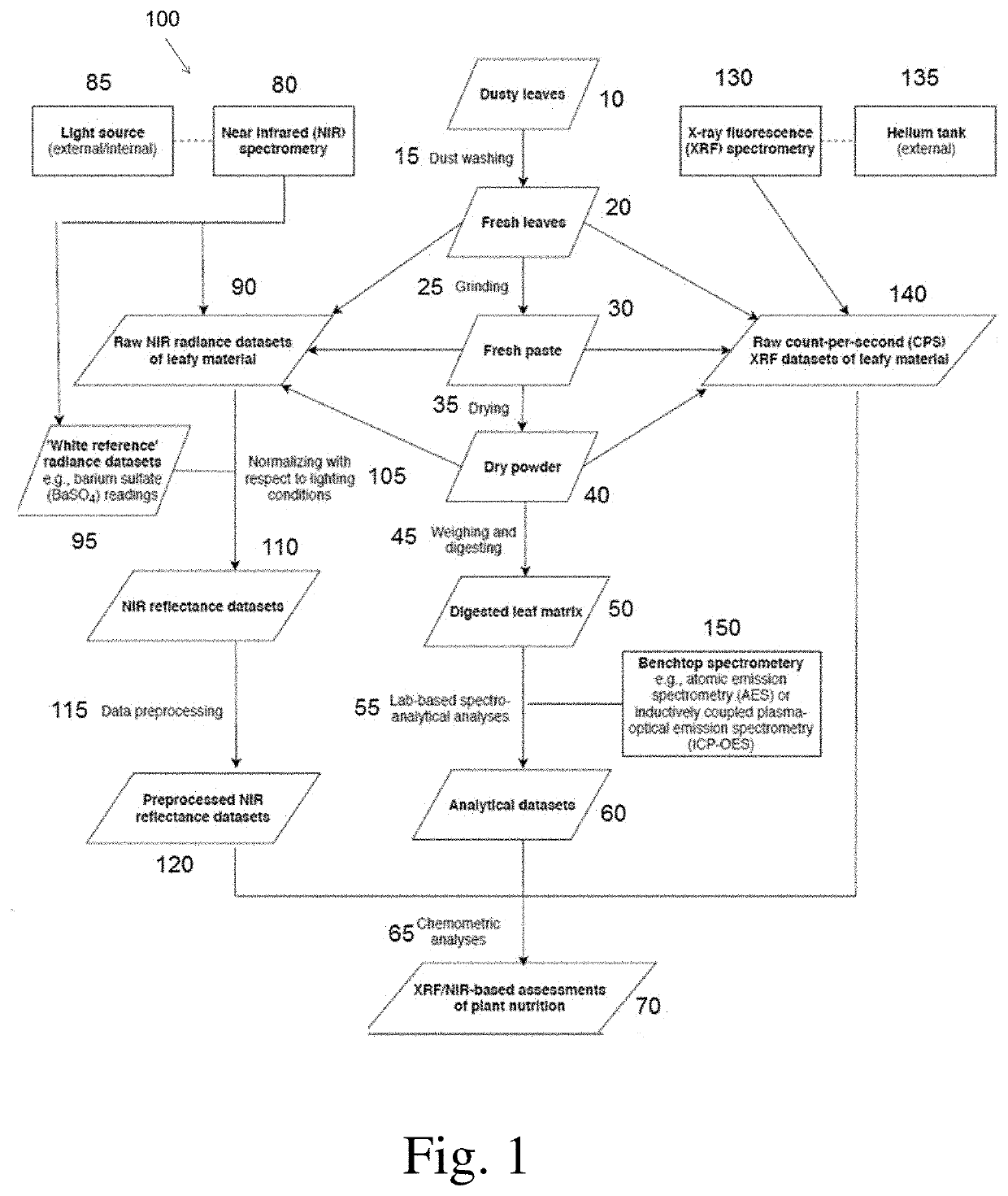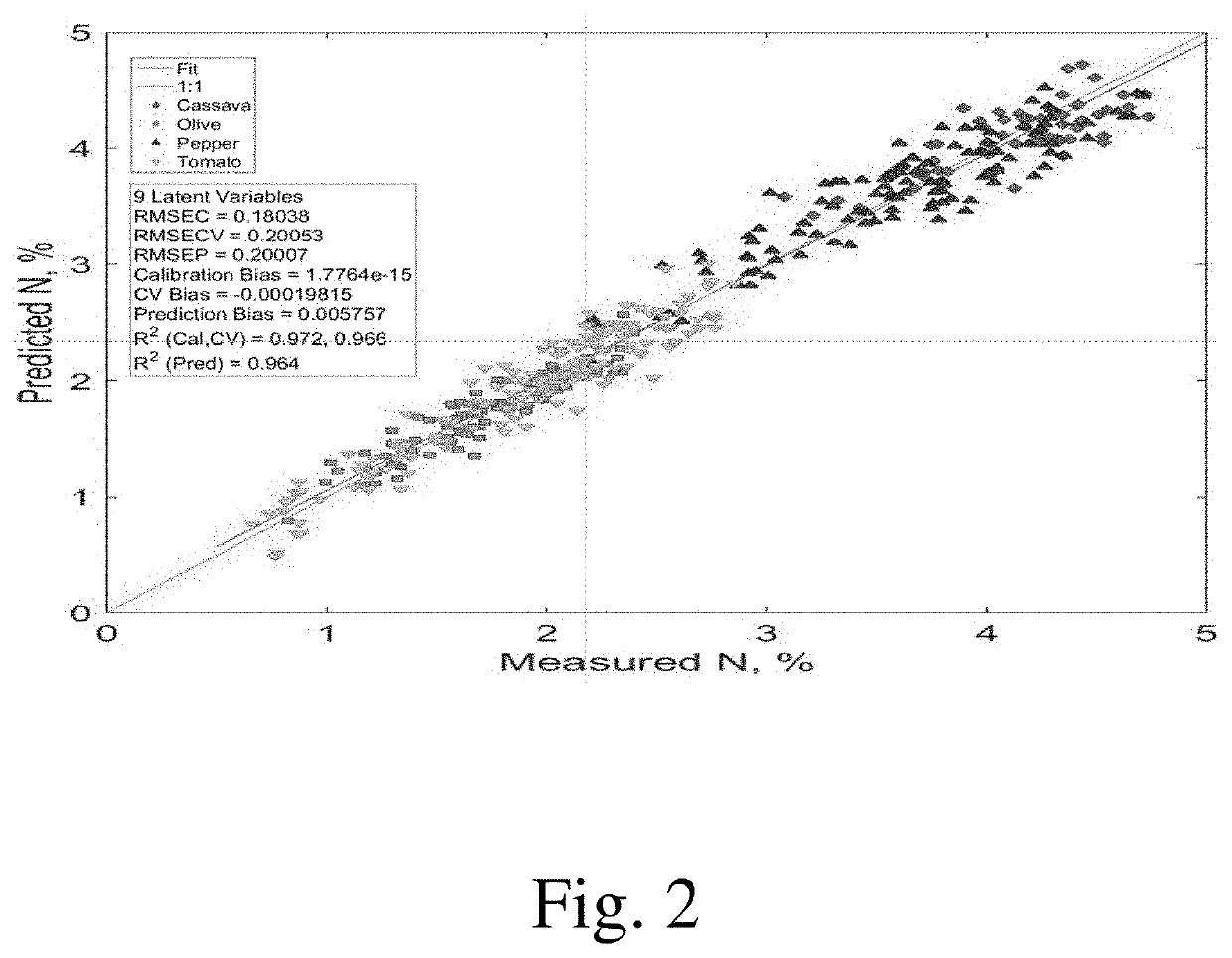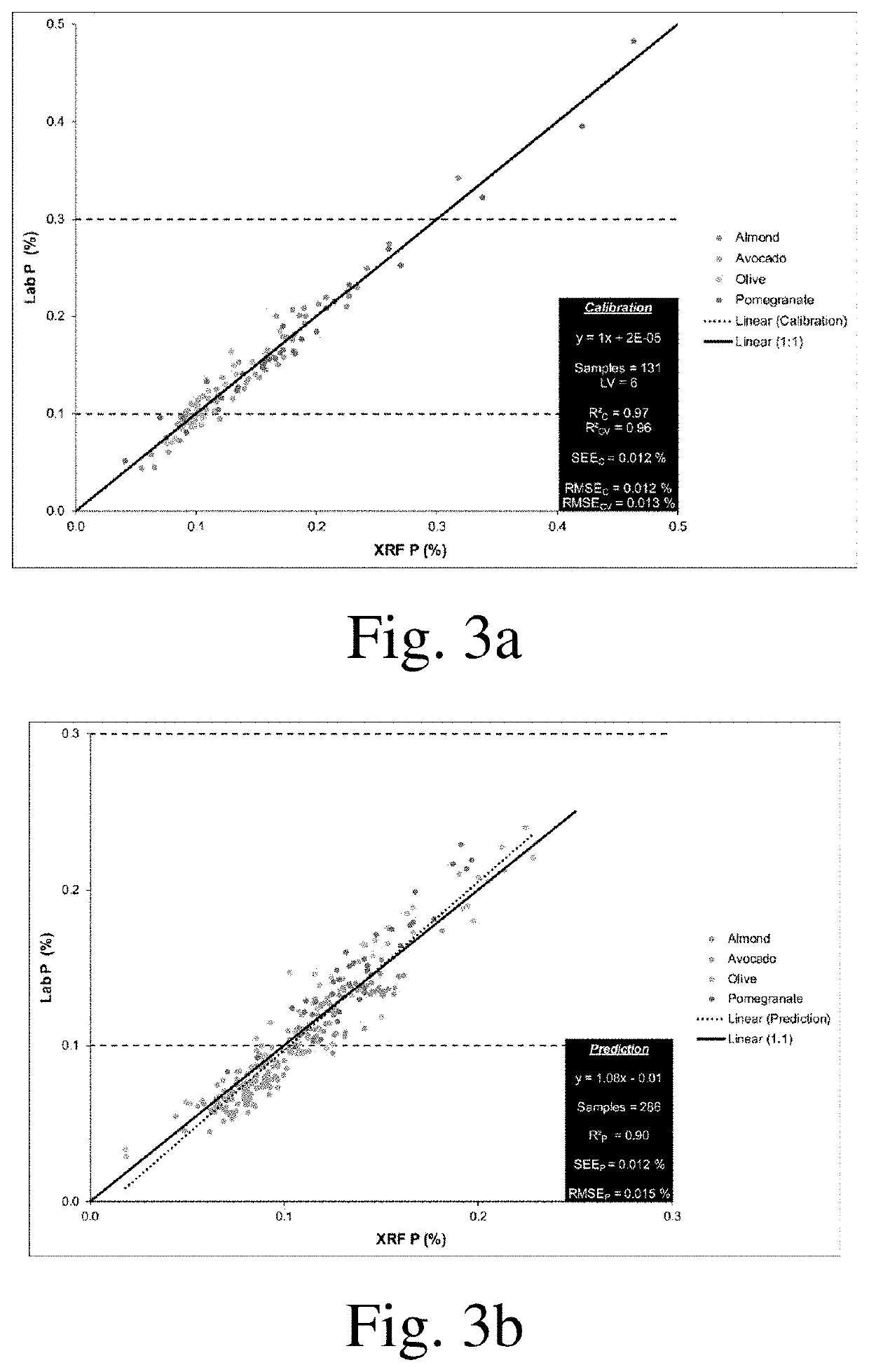Device for measuring element concentrations in plant leaves and method of implementing the same
- Summary
- Abstract
- Description
- Claims
- Application Information
AI Technical Summary
Benefits of technology
Problems solved by technology
Method used
Image
Examples
Embodiment Construction
[0035]The following description is provided, so as to enable any person skilled in the art to make use of said invention and sets forth the best modes contemplated by the inventor of carrying out this invention. Various modifications, however, are adapted to remain apparent to those skilled in the art, since the generic principles of the present invention have been defined specifically to provide a method of measuring element concentration in plant leaves and a system for implementing the same.
[0036]Representative leafy material was collected from experiments of various plant species, growing seasons and environments, elements, and nutrient level gradients and presented in the results section. Once cut, the leaves were kept within a sealed container in order to minimize water loss until reaching the lab, wherein they were thoroughly washed from dust using distilled water. Thereafter, the material from each experiment was divided into three sample preparation groups of a similar nutr...
PUM
 Login to View More
Login to View More Abstract
Description
Claims
Application Information
 Login to View More
Login to View More - R&D Engineer
- R&D Manager
- IP Professional
- Industry Leading Data Capabilities
- Powerful AI technology
- Patent DNA Extraction
Browse by: Latest US Patents, China's latest patents, Technical Efficacy Thesaurus, Application Domain, Technology Topic, Popular Technical Reports.
© 2024 PatSnap. All rights reserved.Legal|Privacy policy|Modern Slavery Act Transparency Statement|Sitemap|About US| Contact US: help@patsnap.com










